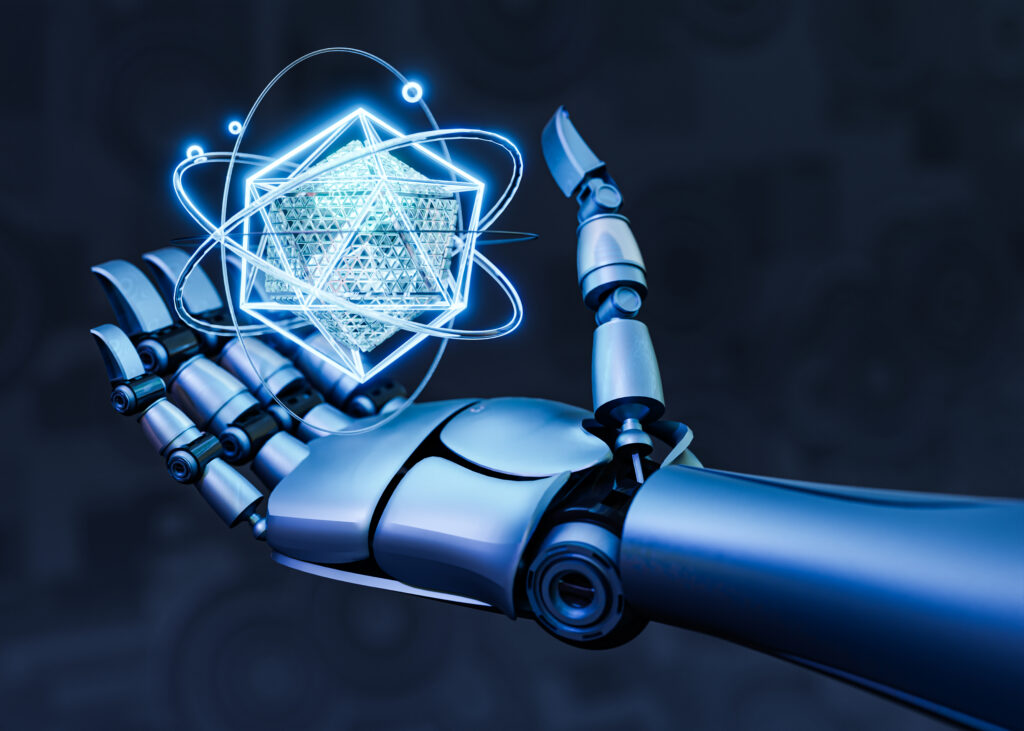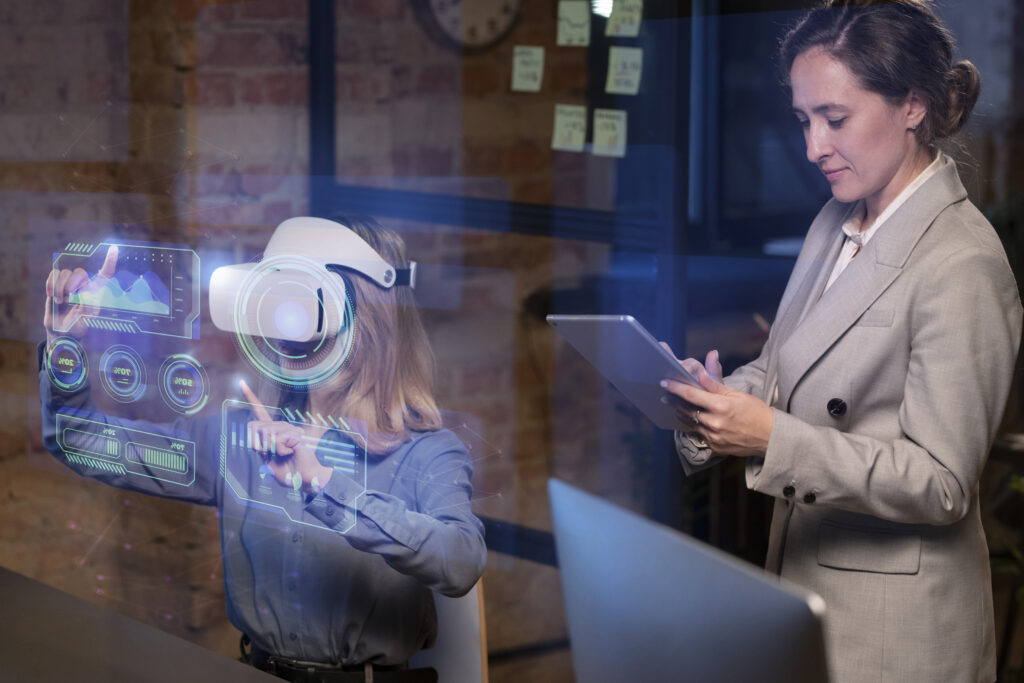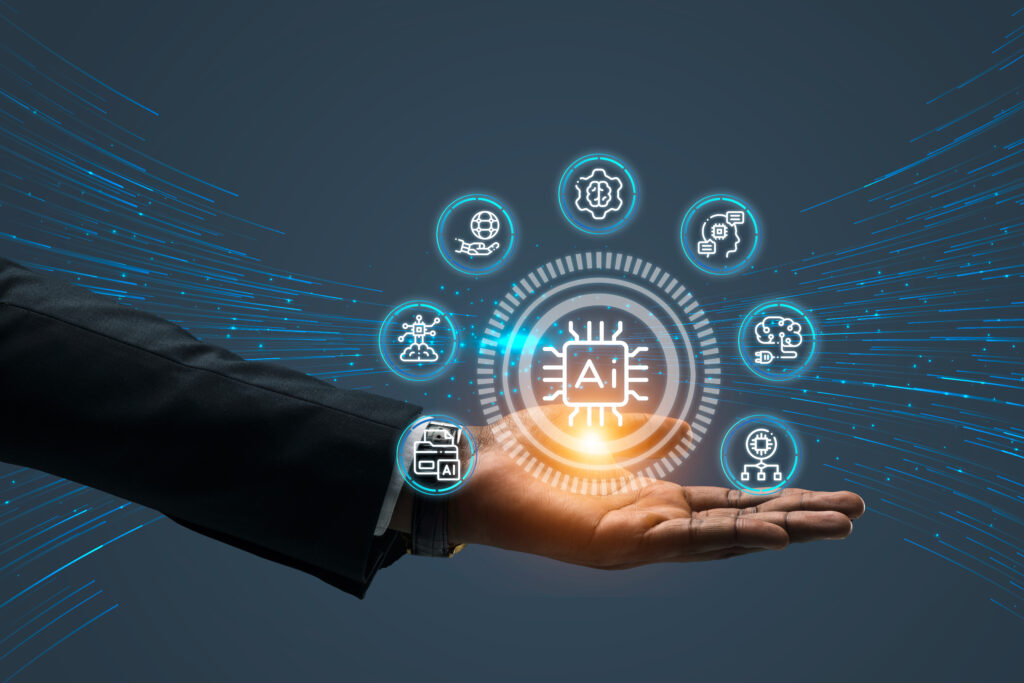Elevating Film Production: 7 AI Tech Innovations
As film production increasingly intersects with the frontiers of artificial intelligence, the industry is witnessing a paradigm shift in how motion pictures are crafted and experienced. The advent of AI technology brings forth a suite of seven groundbreaking innovations that are reshaping the cinematic landscape.
From the genesis of a screenplay to the final cut, every stage of filmmaking is being enhanced by intelligent algorithms capable of scriptwriting assistance, seamless video editing, and even predictive box office success modeling. While the incorporation of virtual reality for previsualization and machine learning for casting decisions is becoming more prevalent, so is AI’s use in generating sophisticated visual effects and real-time language dubbing.
Among other industry players, Adobe is at the forefront of integrating AI into its software, democratizing film production tools previously only accessible to large studios. The implications of these advancements are profound, not only for filmmakers and studios but also for audiences who stand to benefit from more immersive and personalized content.
As we consider the breadth of AI’s role in modern filmmaking, one ponders how these technologies will continue to evolve and what new dimensions they will bring to the art and business of film.
Key Takeaways
- AI-driven scriptwriting and narrative construction enhancements revolutionize the screenwriting process and contribute to the creative process by generating content.
- Automated video editing and creative AI editing tools expedite manual editing processes, unlock new possibilities in narrative construction, and reduce production costs.
- AI-driven video editing software streamlines post-production workflows, reducing production time and costs by automating laborious tasks.
- Predictive box office analytics using AI help evaluate a movie’s financial prospects, inform marketing strategies, and optimize cost-benefit optimization for box office returns.
AI-Driven Scriptwriting Enhancements

Harnessing the power of machine learning, AI-driven scriptwriting enhancements are revolutionizing the screenwriting process by providing data-driven analysis to bolster plot structure, character arcs, and dialogue intricacy. These enhancements are not merely theoretical tools but are grounded in the computational prowess of artificial intelligence (AI), particularly generative AI systems trained on vast corpora of cinematic data. By deploying neural network architectures, AI algorithms can dissect a script’s elements with surgical precision, identifying narrative strengths and weaknesses through historical success patterns.
These AI-driven scriptwriting enhancements represent a paradigm shift in the realm of AI in filmmaking. They offer empirical insights that guide writers in the complex interplay of narrative elements, ensuring a well-crafted story that resonates with audiences. By analyzing natural language and story structure, AI tools can suggest alterations at a granular level—from pacing to dialogue nuances—thereby enriching the storytelling palette.
Moreover, these technologies extend beyond mere suggestion engines. They actively contribute to the creative process, generating content where needed and offering predictive modeling for a script’s market performance. This analytical and technical sophistication equips screenwriters with unprecedented capabilities, transforming intuition-based scripting into a data-informed artistry.
Automated Video Editing Software
Automated video editing software represents a paradigm shift in post-production workflows. It introduces AI algorithms that elevate efficiency and creativity. These advanced tools expedite manual editing processes and unlock new possibilities in narrative construction. They enable editors to reimagine scenes with sophisticated AI-generated effects.
As these technologies evolve, they promise a redefined landscape. Filmmakers can explore storytelling with unprecedented agility and artistic freedom.
Streamlining Post-Production Workflows
AI-driven video editing software is transforming post-production workflows by integrating AI technologies. These advanced tools enable editors to expedite editing while maintaining high quality and creativity standards. They assist filmmakers in streamlining workflows, significantly reducing production time and costs. Using AI in video editing facilitates intricate tasks such as object or background removal and motion tracking, traditionally requiring extensive manual effort.
Innovations like Runway ML’s Gen-1 and Gen-2 offer capabilities ranging from crafting stylized visual effects to generating short videos from simple text prompts. Equally groundbreaking, Adobe’s Firefly harnesses AI to automate laborious tasks within After Effects. These advancements exemplify the synergy between AI and film production processes, heralding a new era of efficiency in post-production.
Creative AI Editing Tools
Building upon the advancements in post-production workflows, creative AI editing tools such as automated video editing software are revolutionizing the industry by offering filmmakers sophisticated capabilities to transform their storytelling techniques with unprecedented speed and ease.
- Efficiency in Automation: AI technology rapidly automates repetitive tasks like object removal and motion tracking, altering the editing landscape.
- Innovative Visual Effects: Using AI, new visual effects and scenes can be generated, pushing the boundaries of traditional filmmaking.
- Budget-Friendly Solutions: AI reduces production costs, making high-quality video effects more accessible.
- Democratization of Filmmaking: AI editing tools level the playing field, allowing independent creators to compete with big-budget productions.
In essence, AI editing tools enhance the technical aspects of production and empower a new wave of creative storytelling in filmmaking.
Enhancing Narrative Construction
Harnessing the power of automated video editing software, storytellers can now construct narratives with precision and creativity once thought unattainable. By leveraging AI, these tools facilitate content creation, from analyzing character arcs to generating stylized footage, enhancing the storytelling process with AI.
Advanced AI models within platforms like Adobe’s Firefly relieve creators from the monotony of manual editing tasks, marrying Human Creativity with AI efficiency to refine the final product. The impact of AI in this realm democratizes high-end production techniques, empowering even novice filmmakers to produce content with cinematic quality.
As AI continues to evolve, its role in narrative construction promises to revolutionize further how stories are brought to life and shared with audiences worldwide.
Predictive Box Office Analytics
Predictive Box Office Analytics employs sophisticated algorithms to evaluate many variables, providing film studios with a data-driven forecast of a movie’s financial prospects. This facet of AI in the film industry is a powerful tool that uses AI to transform how studios approach the economics of filmmaking.
- Historical Data Analysis: AI can analyze past trends to inform the potential success of similar future titles.
- Social Media and Audience Engagement: Analyze large amounts of data from social media to gauge audience preferences and predict performance.
- Targeted Marketing Insights: Utilizes audience data to refine marketing strategies and tailor them to specific demographics.
- Cost-Benefit Optimization: Helps producers assess whether the predicted box office returns justify the production costs.
Virtual Reality Previsualization
Virtual reality previsualization allows filmmakers to craft real-time scenes within a fully controllable digital milieu. This innovation bolsters directorial decision-making by providing an interactive simulation that can be modified to explore various narrative and aesthetic outcomes.
The technology’s precision and immediacy in rendering complex visual concepts offer a substantial leap forward in preproduction efficiency and creative experimentation.
Real-Time Scene Crafting
Real-Time Scene Crafting through Virtual Reality Previsualization represents a transformative leap in film production, offering filmmakers an immersive tool for meticulous planning and visualization of scenes before stepping onto the actual set. This intersection of technology and creativity has a transformative impact on the filmmaking industry, with AI Will Augment playing a pivotal role.
- Facilitates precise previsualization: Enables directors to experiment with camera angles and lighting in a virtual environment.
- Streamlines production: Reduces the need for on-set adjustments, saving time and resources.
- Enhances collaborative decision-making: The production team can visualize and modify scenes collaboratively.
- Using machine learning: Continuously improves scene crafting algorithms, leading to more realistic and efficient previsualization.
Leveraging AI in real-time scene crafting is not just a technical advancement; it’s a strategic tool reshaping the industry’s approach to film production.
Enhanced Directorial Decision-Making
Building upon the foundation of meticulous previsualization offered by AI-enhanced virtual environments, Enhanced Directorial Decision-Making further empowers filmmakers to refine their artistic vision with unprecedented precision before the cameras roll.
AI is transforming the film production landscape, allowing filmmakers to analyze large amounts of data to provide valuable insights into the creative process. By harnessing the potential of AI, directors can experiment with different scenarios within virtual reality, making informed decisions on camera angles, lighting, and set design.
This streamlines communication with cinematographers and VFX artists and optimizes the creative workflow. As directors use AI to previsualize scenes, they can anticipate challenges and perfect their vision, ensuring a more targeted and resource-efficient production phase.
AI-Based Visual Effects Creation

Harnessing the power of AI and machine learning, creating visual effects in film production is transforming towards greater automation and enhanced artistic expression. As technology advances, AI-based visual effects creation redefines what is possible on the big screen, providing filmmakers with tools to craft more realistic and immersive cinematic experiences.
- Efficiency in Routine Tasks: AI systems automate time-intensive tasks such as rotoscoping and object removal, significantly reducing production time and costs.
- Generative Capabilities: The emergence of generative AI models allows for the rapid creation of intricate CGI elements, from lifelike creatures to expansive digital landscapes.
- Realism in Virtual Characters: By analyzing character movements and expressions, AI enhances the realism of virtual characters, ensuring they better align with the envisioned character arcs.
- Immersive Environments: AI-driven technology facilitates crafting immersive scenes seamlessly blending with live-action footage, elevating the viewer’s experience.
AI-based visual effects creation has various applications, from streamlining workflows to unlocking new creative avenues. It is not just a tool for reducing manual labor; it represents a paradigm shift in how visual stories are told, enabling a synergy between technology and artistry that pushes the boundaries of cinematic storytelling.
Machine Learning in Casting Decisions

While AI-based visual effects creation is revolutionizing the aesthetic dimensions of film, machine learning is simultaneously redefining the preproduction process by optimizing casting decisions by analyzing actor performance data. This technological advancement allows production companies and studio executives to analyze large amounts of data, including box office performance, audience reception, and past casting successes, to make more informed decisions.
Machine learning algorithms can examine the nuances of an actor’s previous roles and predict how well they might fit into a new project. This could be particularly valuable in considering high-profile actors like Tom Cruise, where the investment in star power must be balanced with audience expectations and the specifics of the role. AI and machine learning tools are not intended to replace the expertise of talent agencies and casting directors but rather to provide them with powerful insights that can help filmmakers achieve a more precise alignment between the actor’s capabilities and the character’s requirements.
Moreover, this data-driven approach to casting can extend beyond star selection, potentially uncovering underutilized talent that could bring fresh dynamics to a project. Film critics and industry professionals recognize AI’s potential to democratize opportunities within the industry, offering up-and-coming actors a fairer chance to be cast based on merit and fit rather than solely on reputation or past collaborations.
Real-Time Language Dubbing and Subtitles

How can filmmakers ensure their work transcends linguistic boundaries and reaches a global audience? Real-Time Language Dubbing and Subtitles, powered by AI, offer a compelling solution by providing instantaneous translation and adaptation of spoken dialogue and on-screen text. This innovative approach not only broadens accessibility but also significantly transforms the viewer’s experience by allowing a feature film to resonate across different cultures and languages.
AI and machine learning are at the forefront of this change as the industry continues exploring new AI applications that can efficiently analyze large amounts of data. Here are some key insights:
- AI-driven systems can automatically sync dialogue with actors’ lip movements, ensuring a natural viewing experience in different languages.
- The technology reduces the time and costs associated with traditional dubbing and subtitling, accelerating post-production.
- It allows users to enjoy content in their preferred language without delay, fostering inclusivity.
- As these tools continue to evolve, they promise to enhance global storytelling by breaking down language barriers.
Real-time language dubbing and subtitles embody how technological advancements redefine the reach and impact of cinematic works in an increasingly connected world.
FAQs
What is AI (Artificial Intelligence)?
AI refers to developing computer systems that can perform tasks that require human intelligence. These tasks include learning, reasoning, problem-solving, understanding natural language, and perception.
How does AI work?
AI systems use algorithms and computational models to process data, identify patterns, and make decisions. Machine learning, a subset of AI, allows systems to improve performance over time by learning from data.
What is machine learning?
Machine learning is a subset of AI focusing on developing algorithms enabling computers to learn from data. Instead of being explicitly programmed, ML systems use data to improve their performance and make predictions or decisions.
What is deep learning?
Deep learning is a type of machine learning that involves neural networks with many layers (deep neural networks). It has been particularly successful in tasks such as image and speech recognition.
What are the applications of AI?
AI is used in various fields, including healthcare, finance, manufacturing, transportation, and entertainment. Typical applications include virtual assistants, image and speech recognition, recommendation systems, and autonomous vehicles.
